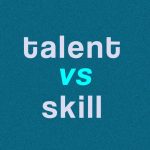The Rise of Gamification in Corporate Training: Driving Engagement & Performance in 2025

Why Gamification is Transforming Corporate Learning
Employee training is no longer just about presentations and manuals—it’s about engagement, motivation, and real-world application. As organizations strive to make learning more interactive, gamification is proving to be a game-changer.
A recent Harvard Business School study with KPMG examined the impact of gamified training programs across 24 offices over 29 months. The results were eye-opening:
✅ 25% increase in fee collection
✅ 22% growth in new business opportunities
✅ 16% increase in client acquisition
✅ Higher employee performance and engagement
The study also found that leader participation played a crucial role in training success, with offices that embraced gamification seeing significant business growth.
So, how can companies leverage gamification to enhance training outcomes? Let’s explore the key benefits, applications, and best practices for integrating gamification into your learning strategy.
What is Gamification in Training?
Gamification is the application of game mechanics (points, leaderboards, challenges, and rewards) to non-game settings—like corporate training. By tapping into human psychology, gamified training fosters a sense of competition, accomplishment, and progress, making learning more engaging and effective.
Rather than just absorbing information, employees interact with training in a dynamic and reward-driven way, leading to higher retention and motivation.
Key Gamification Features for Effective Training
1. Goal-Oriented Learning
Every training program should have a clear objective. Use SMART goals (Specific, Measurable, Achievable, Relevant, Time-bound) to ensure employees understand their targets and can track progress effectively.
📌 Tip: Well-defined goals remove ambiguity, helping employees stay focused and motivated.
2. Interactive In-Lesson Game Elements
Integrate game elements within lessonsto create an engaging learning experience. This can include:
🎯 Checkpoint quizzesto test understanding
🎭 Role-playing scenariosfor practical application
🃏 Flashcard games to reinforce vocabulary and concepts
📌 Tip: Making learning interactive reduces boredom and increases knowledge retention.
3. Post-Lesson Engagement & Reinforcement
Gamification shouldn’t stop when the lesson ends. Keep employees engaged with:
📝 Knowledge recall quizzesto reinforce previous lessons
🧠 Memory-based challenges to ensure long-term retention
📌 Tip: Continuous reinforcement strengthens learning and application in the workplace.
4. Friendly Competition with Leaderboards & Points
Competition boosts motivation! Incorporating leaderboards, points, and badges encourages employees to stay engaged and push themselves to perform better.
📌 Tip: A little friendly rivalry fosters enthusiasm and encourages employees to take training seriously.
5. Reward Systems for Extra Motivation
While leaderboards create engagement, tangible rewardsprovide extra motivation. Consider offering:
🎁 Gift cardsor bonuses for top performers
🏆 Exclusive company perksfor milestone achievements
🎟 Gamified incentives (e.g., extra PTO, recognition awards)
📌 Tip: Rewards give employees a reason to stay committed to learning beyond professional development.
6. Progress Tracking with Scorecards
Scorecardsoffer a visual representation of employee progress, tracking:
📌 Points earned
📌 Badges unlocked
📌 Current leaderboard standing
📌 Overall skill progression
📌 Tip: Scorecards help employees and L&D teams track strengths, identify skill gaps, and celebrate progress.
Gamification is no longer just a trend—it’s a proven strategy for boosting engagement, motivation, and training effectiveness. As businesses continue to embrace interactive learning in 2025, companies that integrate gamification into their L&D programs will see stronger employee performance and better business outcomes.
🚀 Is your organization ready to level up corporate training?
#Gamification #CorporateTraining #LearningAndDevelopment #EmployeeEngagement #WorkplaceLearning #TrainingInnovation #LeadershipDevelopment #HR #Elearning #ProfessionalGrowth #FutureOfWork




















